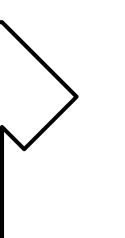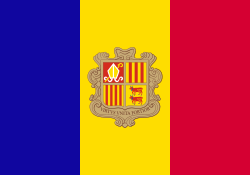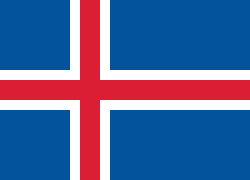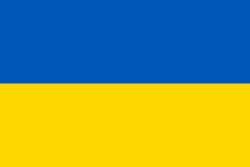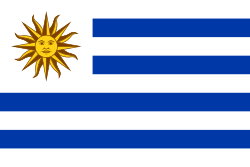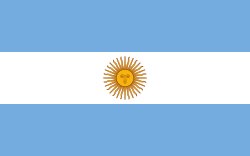Englands fodboldlandshold
 | |||
| Kælenavn(e) | The Three Lions | ||
|---|---|---|---|
| Forbund | The Football Association | ||
| Kontinentalt forbund | UEFA (Europa) | ||
| Landstræner | Gareth Southgate | ||
| Anfører | Harry Kane | ||
| Flest landskampe | Peter Shilton (125) | ||
| Topscorer | Harry Kane (54) | ||
| Hjemmebane | Wembley Stadium | ||
| FIFA-kode | ENG | ||
| |||
| FIFA-rangering | |||
| Nuværende | 14 | ||
| Højeste | 3 (august 2012) | ||
| Laveste | 27 (februar 1996) | ||
| Elo-rangering | |||
| Nuværende | 10 | ||
| Højeste | 1 (1872–1876 1892–1911 1966–1970 1987–1988) | ||
| Laveste | 16 (19. juni 2014) | ||
| Første kamp | |||
(Partick, Skotland; 30. november 1872) | |||
| Største sejr | |||
(Belfast, Irland; 31. juli 1882) | |||
| Største nederlag | |||
(Budapest, Ungarn; 23. maj 1954) | |||
| Verdensmesterskabet | |||
| Deltagelser | 15 (Første gang i 1950) | ||
| Bedste resultat | Mestre, 1966 | ||
| EM | |||
| Deltagelser | 9 (Første gang i 1968) | ||
| Bedste resultat | Andenplads, 2020 og 2024 | ||
Englands fodboldlandshold er det nationale fodboldhold i England, og landsholdet bliver administreret af The Football Association. England blev medlem af FIFA i 1872 selv om det engelsk fodboldforbund først blev stiftet i 1919. Holdet har deltaget i 13 VM-slutspil, og nationalstadionet er Wembley Stadium i London.
Englands hidtil eneste titel blev vundet ved VM i 1966 på hjemmebane, hvor man i finalen besejrede Vesttyskland med 4-2. Ved EM i 1968, VM i 1990 og EM i 1996 nåede man semifinalerne.
Truppen
Følgende trup var udtaget til VM-kvalifikations kampene mod Andorra og Ungarn den 9. og 12. oktober 2021:
Mål og kampe er opdateret per d. 12 oktober 2021, efter kampen imod Ungarn.
Nylige indkaldFølgende spillere blev ikke indkaldt til den seneste landskamp, men er blevet indkaldt til en A-landskamp indenfor de seneste 12 måneder.
|
Medier brugt på denne side
Football kit template socks
Flag of the Socialist Federal Republic of Yugoslavia (1946-1992).
The design (blazon) is defined in Article 4 of the Constitution for the Republic of Yugoslavia (1946). [1]
Flag of Portugal, created by Columbano Bordalo Pinheiro (1857–1929), officially adopted by Portuguese government in June 30th 1911 (in use since about November 1910). Color shades matching the RGB values officially reccomended here. (PMS values should be used for direct ink or textile; CMYK for 4-color offset printing on paper; this is an image for screen display, RGB should be used.)
Flag of Austria with the red in the Austrian national colours which was official ordered within the Austrian Armed Forces (Bundesheer) in the characteristic “Pantone 032 C” (since May 2018 the Red is ordered in the characteristic “Pantone 186 C”.)
The Flag of Europe is the flag and emblem of the European Union (EU) and Council of Europe (CoE). It consists of a circle of 12 golden (yellow) stars on a blue background. It was created in 1955 by the CoE and adopted by the EU, then the European Communities, in the 1980s.
The CoE and EU are distinct in membership and nature. The CoE is a 47-member international organisation dealing with human rights and rule of law, while the EU is a quasi-federal union of 27 states focused on economic integration and political cooperation. Today, the flag is mostly associated with the latter.
It was the intention of the CoE that the flag should come to represent Europe as a whole, and since its adoption the membership of the CoE covers nearly the entire continent. This is why the EU adopted the same flag. The flag has been used to represent Europe in sporting events and as a pro-democracy banner outside the Union.Forfatter/Opretter: F l a n k e r, Licens: CC BY-SA 2.5
Flag of the Kingdom of Sardinia (1851-1861) and of the Kingdom of Italy (1861-1946). Use: Civil flag and ensign. In a governmental or a military context, the crowned version (see Crowned version) was always used (as State flag and naval ensign).
Forfatter/Opretter: F l a n k e r, Licens: CC BY-SA 2.5
Flag of the Kingdom of Sardinia (1851-1861) and of the Kingdom of Italy (1861-1946). Use: Civil flag and ensign. In a governmental or a military context, the crowned version (see Crowned version) was always used (as State flag and naval ensign).
Det er let at give dette billede en kant
Used color: National flag | South African Government and Pantone Color Picker
| grøn | rendered as RGB 0 119 73 | Pantone 3415 C |
| gul | rendered as RGB 255 184 28 | Pantone 1235 C |
| rød | rendered as RGB 224 60 49 | Pantone 179 C |
| blå | rendered as RGB 0 20 137 | Pantone Reflex Blue C |
| hvid | rendered as RGB 255 255 255 | |
| sort | rendered as RGB 0 0 0 |
Straight Line Steady, intended for use in Template:Infobox Company. Use {{steady}} in wikipedia to make small line for steady profit. Self-made.
Forfatter/Opretter: Ricky Sen, Licens: CC BY-SA 4.0
Commemorative England kit for 150th anniversary of the FA
Flag of Hungary from 20 August 1949 to 12 November 1956.
Forfatter/Opretter: Sangjinhwa (originally America06), Licens: CC BY-SA 4.0
The arms of The Football Association (The FA), include star version, drawn from from the blazon:
"Argent, semée of Tudor roses, three lions passant guardant in pale azure"
The heraldry is based on the national heraldry of England: the "three lions passant guardant in pale" (three lions walking and looking sideways, one atop the other) are like those of the mediaeval royal arms of the English kingdom, though the FA's three lions are "azure" (blue) and the royal arms' lions are "or armed and langued azure" (gold with blue claws and tongues). The Tudor rose is the national heraldic badge of England, uniting the white rose of the House of York with the red rose of the House of Lancaster. The ground colour of the shield (the "field") is "argent" (silver) a heraldic "metal" traditionally represented as white.
The FA is the governing body of football in England (and the Isle of Man and the Channel Islands).Forfatter/Opretter: Ricky Sen, Licens: CC BY-SA 3.0
Commemorative England kit for 150th anniversary of the FA
This is "Saint Patrick's saltire", the third component of the Union Flag. It represents Ireland and is called "Saint Patrick's cross/saltire", though whether this was originally an authentic symbol of Saint Patrick is historically quite doubtful.

